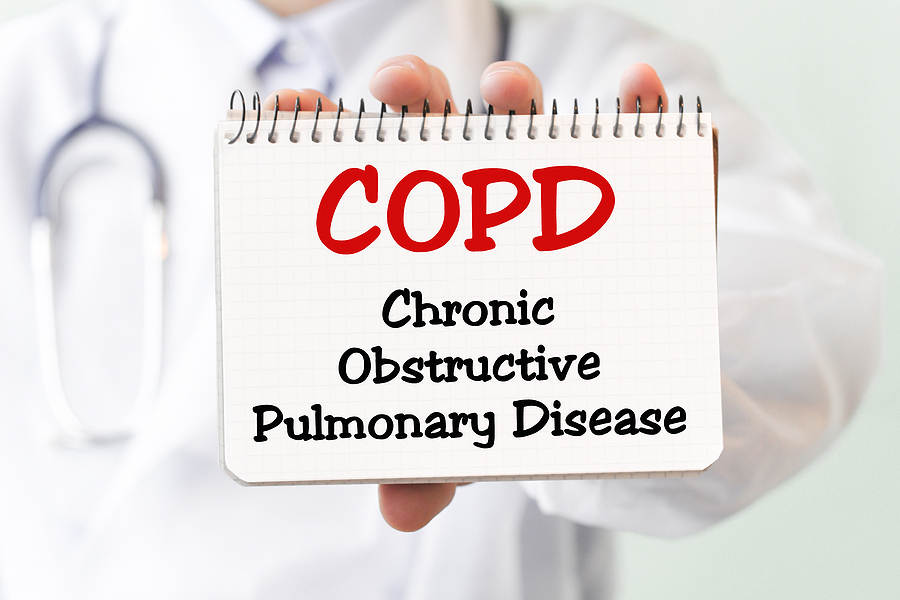COPD in Elderly Adults
Category:

Chronic obstructive pulmonary disease (COPD) is amazingly common among the elderly. In fact, it’s estimated around10% of Americans 75-and-up are suffering from it. And surprisingly, even though it’s so common, it can also be challenging to diagnose older adults with COPD. Because with aging comes muscular deconditioning, comorbid conditions, and other factors that contribute to a natural decline in respiratory function – all of which can mask it.
With that said, it’s also critical to identify and intervene in COPD as early as possible. Because without intervention, the result is often irreversible lung damage. (COPD is currently the3rd leading cause of death in the US.) But what kind of risk factors should you be aware of? How can you slow it down, what kind of treatment options are there, and what’s the prognosis for COPD in the elderly?
COPD and the Elderly
Unfortunately, COPD may not present with any serious symptoms until there has been considerable damage to the lungs. Worse still, the early signs of COPD are very easy to dismiss. Because the most common signs and symptoms of COPD in elderly patients are the symptoms of emphysema and chronic bronchitis, which can seem like nothing to worry about.
Download a Free Guide to Home Care
Early warning signs might include shortness of breath, difficulty breathing, productive cough, chronic coughing (especially in the morning), chest tightness, fatigue, unintended weight gains or weight loss, and wheezing. But it’s important to keep in mind that these kinds of symptoms can also be another condition, like asthma; a physical exam and lung function tests may help your doctor to make a diagnosis.
Risk factors for COPD include family history, exposure to lung irritants (pollution, fumes, secondhand smoke, etc.,) asthma, childhood respiratory infections, and being over the age of 65. Women are also more likely than men to suffer from COPD, and about three-quarters of COPD patients are current or former smokers.
COPD in the Elderly – Prognosis
Everyone’s experience with COPD will be different. Some people don’t seek medical attention until they are literally unable to breathe after walking short distances, by which time considerable damage has been done. Losses in lung function loss tend to decline slowly, but can be accelerated by other illnesses.
Using the Global Initiative for Chronic Obstructive Lung Disease (GOLD) to provide diagnostic criteria, doctors can use a spirometry lung function test to predict life expectancy and guide treatment choices. The test is essentially just a measurement of how much air a person can forcefully exhale during a one-second duration. But the results can help to categorize the severity of the condition, and COPD patients can be categorized into four stages.
According to a 2009 study published in the International Journal of Chronic Obstructive Pulmonary Disease, a current smoker without serious comorbid conditions can expect stage 1 COPD to reduce their life expectancy by 0.3 years; 2.2 years for stage two, or 5.8 years for stages three and four. Smokers who quit have better outcomes, with a life expectancy reduction of 1.4 years during stage two, or 5.6 years during stage three and four. With those who have never smoked, stage two reduced life expectancy by about 0.7 years, or 1.3 years for the later stages.
Clearly, COPD in elderly patients can be quite dangerous when left unmanaged.Older patients with COPD are also at greater risk of developing a functional disability – which just another reason why it’s essential to intervene as soon as possible.
COPD Treatment in Elderly Patients
The main treatment for COPD are drugs administered through inhalers, and they’re effective at providing relief from symptoms. (Keep in mind:studies have found that cognitively impaired adults are woefully unreliable when it comes to correctly operating and consistently using inhalers.) Likewise, oxygen therapy can help reduce symptoms – but neither provide a cure.
But once lung function is lost to COPD, it typically can’t be recovered. And in the later stages of the disease, surgery can become necessary to remove damaged parts of the lung. That’s why, in addition to medications, it’s vital for older adults with COPD to seriously pursue pulmonary rehabilitation (changes in lifestyle.) As is so often the case – there is no replacement for diet and exercise. Identifying it early and working to manage it, COPD doesn’t have to stand between a person living out a long, happy life.
Subscribe
Date: December 3, 2020
Category:
